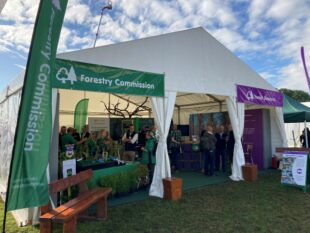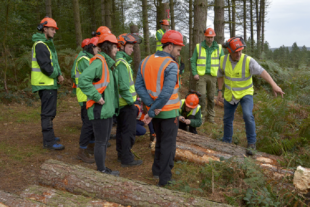 Emily Robinson, Content Officer at the Forestry Commission, introduces the autumn season changes we can expect in woodlands as trees and wildlife begin their preparation for winter.
Emily Robinson, Content Officer at the Forestry Commission, introduces the autumn season changes we can expect in woodlands as trees and wildlife begin their preparation for winter.
September marks the beginning of a dramatic transformation period within our woodlands and forests. While summer's full green canopy still dominates our woodlands, subtle changes are already underway that will reshape our leafy landscapes over the coming months.
We are now losing nearly three minutes of sunlight each day, and these shortening daylight hours, paired with cooling temperatures, are triggering changes that will soon become visible. The trees are beginning their quiet preparation for winter.
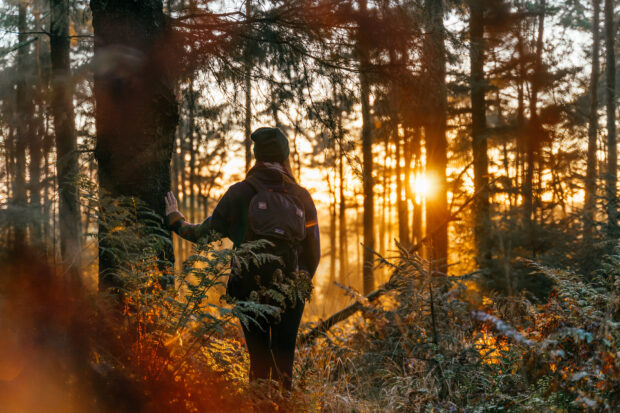
The difference between deciduous and evergreen trees
Understanding which trees shed their leaves helps explain what we'll witness in the coming weeks. Deciduous trees drop their leaves annually, whilst evergreens retain theirs throughout winter.
Most broadleaf trees are deciduous, though there are some exceptions such as holly, which is an evergreen that keeps its glossy, spiky leaves year-round. Conifers on the other hand, tend to be evergreen, with exceptions such as European larch which are deciduous and will shed their needles each year.
Why deciduous trees will soon shed their leaves
The broad leaves that captured summer sunshine so efficiently are now becoming liabilities. In freezing temperatures, these large leaf surfaces would lose precious water and risk cellular damage from colder weather.
Deciduous trees have already begun forming abscission layers – specialised barriers at the base of each leaf stem that gradually restrict the flow of nutrients and water. As autumn progresses, this layer will produce enzymes that methodically break down the cell walls that anchor each leaf to its branch. Eventually, even a gentle breeze will be enough to send the leaf spiralling towards the ground.
Without leaves, trees can enter dormancy to dramatically conserve their energy. They retain moisture within their woody tissues to prevent dehydration, whilst their bare branches offer less resistance to winter winds and reduce the burden of snow settling on them. These clever adaptations allow trees to weather the colder months ahead with minimal stress, conserving their resources for spring's eventual return.
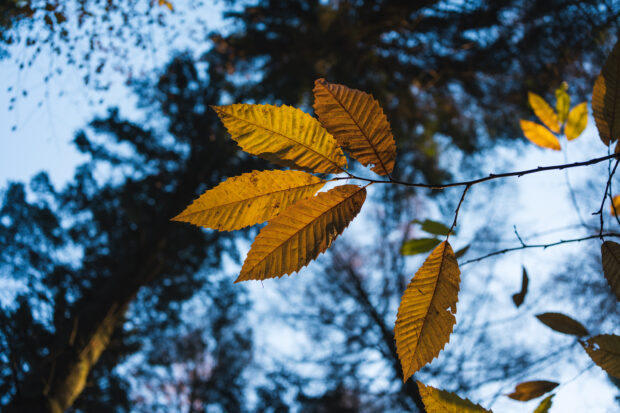
How evergreens are preparing for winter
Rather than retreating completely, evergreen species will adjust their metabolism and physiology to maintain some activity throughout winter, whilst protecting themselves from harsh conditions.
Scots pine needles may begin showing a subtly different blue-green colouration as they develop natural antifreeze compounds. Norway spruce branches will start adjusting their angle, preparing to shed heavy snow loads more effectively. This helps to prevent branches from snapping under excessive weight, and the downward slope also helps deflect harsh winds.
By late October, conifer growth virtually ceases as trees redirect their energy towards survival rather than growth. The vulnerable bright green summer growth darkens and hardens to withstand freezing temperatures. Several species will also develop thicker waxy coatings on their needles to prevent water loss, as the frozen soil in winter makes water uptake more difficult.
Autumn also brings more visible changes in conifers, as mature cones begin opening up on warm days to release their seeds. You might notice the contrast between this year's small green cones and the larger brown cones from previous years finally splitting apart. Meanwhile, new cone buds are already forming for next year's cycle!
An optimal window for tree planting
During the autumn and winter months, trees naturally redirect their energy from leaf and shoot production towards root development. This makes it the optimal time to plant trees. The seasonal shift makes newly planted saplings far more likely to survive, as they can focus entirely on establishing robust root systems without the demanding task of supporting active foliage.
The cooler, wetter conditions typical of these months provide ideal establishment conditions. Increased rainfall delivers consistent moisture without the risk of summer drought stress, whilst lower temperatures reduce water loss through transpiration. Dormant trees also experience considerably less transplant shock compared to those moved during the growing season, as they're not actively producing new shoots and leaves that would place immediate demands on a disturbed root system.
By the time spring comes, these well-established plantings will have already developed root networks that will support vigorous new growth.
A feeding frenzy for wildlife
The arrival of autumn marks the beginning of intense activity for woodland wildlife too as they prepare for winter alongside the trees. The year's collective seed and fruit production across the woodland is now reaching its peak; with hazelnuts, acorns, beechnuts and berries becoming increasingly abundant. This autumn bounty will drive much of the wildlife behaviour you'll observe over the coming weeks, from squirrels frantically collecting nuts to birds like jays taking acorns for their winter stores.
These interactions benefit trees as much as animals. The Eurasian jay is considered by some to be the most important factor in oak dispersal and spread, as they store thousands of acorns each autumn yet fail to retrieve many of them.[1] Meanwhile, berry-eating birds like thrushes and blackbirds consume fruits whole, dispersing viable seeds through their droppings across wide areas.
This helpful wildlife-driven seed dispersal helps trees to colonise new territories and maintains genetic diversity between distant woodland populations.
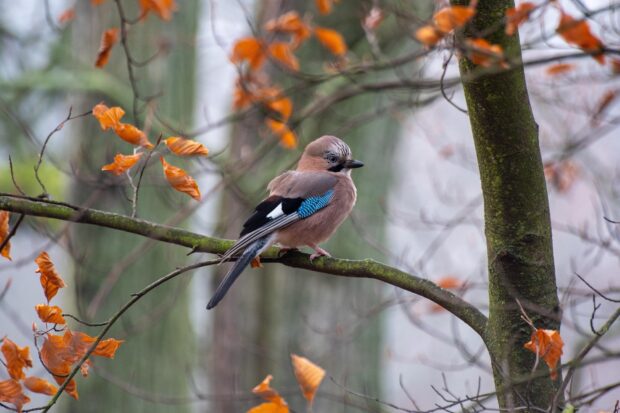
A woodland's underground economy
As leaves fall and begin to cover the woodland floor over the coming months, they’ll become the foundation of the soil’s underground economy. The leaves provide essential food for an army of decomposers – earthworms, millipedes, springtails and countless soil bacteria and fungi – who will work tirelessly to break it all down.
Look out for the gradual disappearance of leaf litter through autumn and winter as these active decomposers turn complex plant tissue back into nutrients. The nitrogen, phosphorus and potassium locked within the fallen leaves will slowly release back into the soil, which creates a nutrient-rich zone around each tree’s root system. These nutrients will be reclaimed by the trees to fuel growth in the spring.
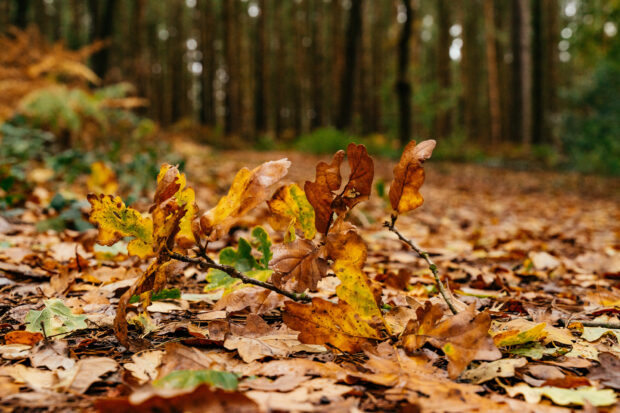
Watching the transformations unfold
Over the next few months, every walk in a woodland will reveal new chapters in this unfolding transformation. Watch for the first yellow speckles on birch leaves, listen for the increased activity of birds making the most of abundant berry supplies and enjoy the sound of leaves crunching beneath your feet. Each observation connects you to processes that have shaped these ecosystems for thousands of years.
Whether you're managing woodland or simply seeking to understand the natural world around you, autumn offers numerous opportunities to witness the intricate relationships that make our forests resilient and endlessly fascinating. The transformation is already beginning – the question is, what will you notice first?
Learn about ways to help support your woodland through this period with our blog that provides 5 tips for managing your woodland this autumn.
[1] Foraging Eurasian Jays (Garrulus glandarius) prefer oaks and acorns in central Europe
